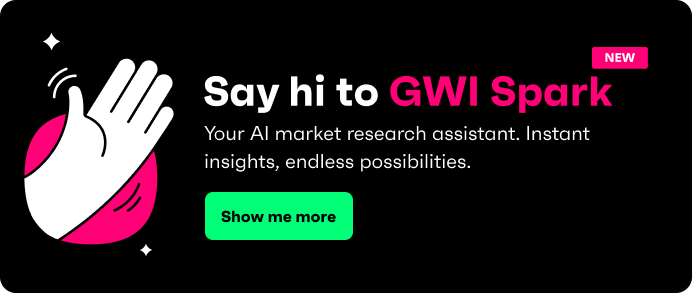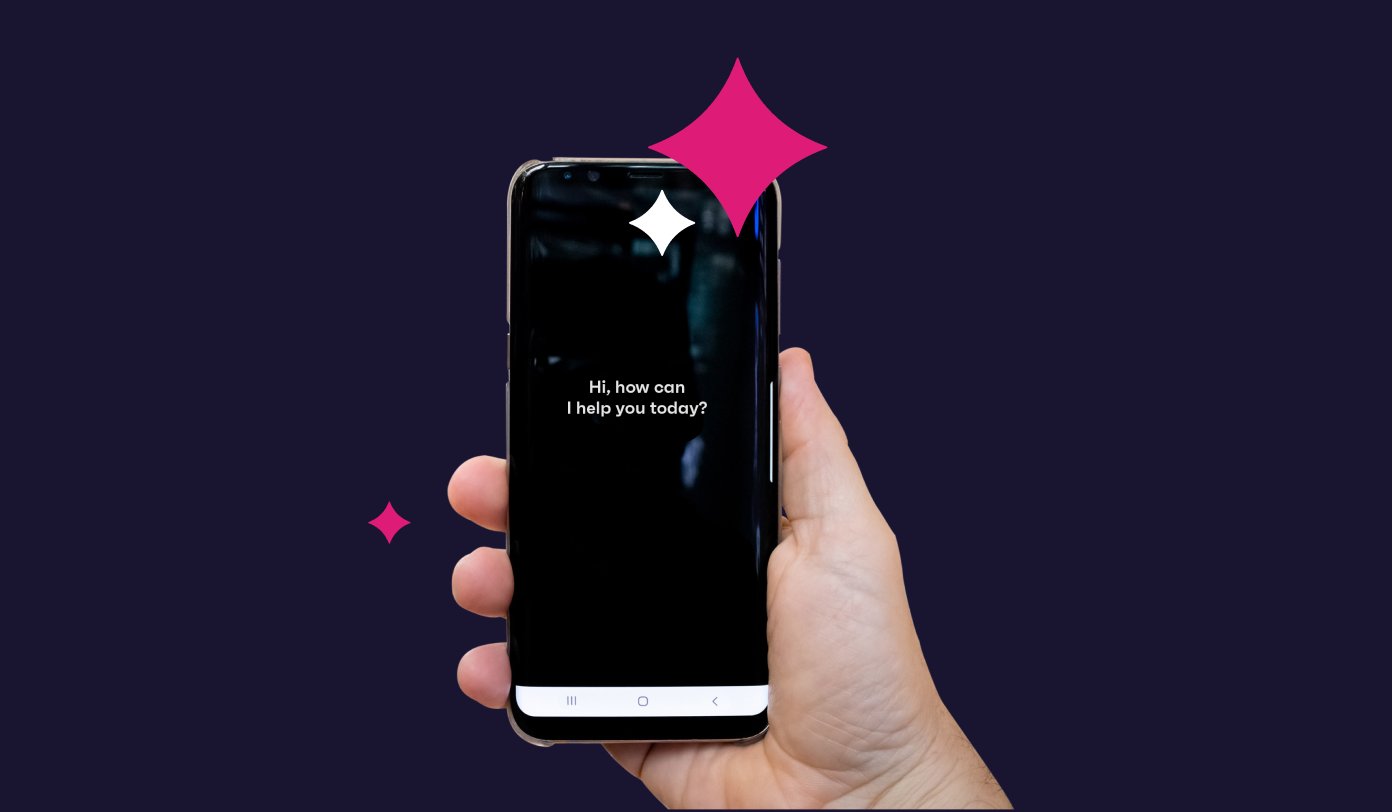Market research: it’s the secret weapon behind most great business decisions. But let’s be real, traditional market research can sometimes feel like assembling IKEA furniture without the instructions - while it might be possible, it’s slow, frustrating, and often full of guesswork.
Enter AI. AI is transforming market research by helping businesses analyze consumer behavior faster, more efficiently, and with less effort (hurrah!). In this article, we’ll cover the basics of market research before diving into how AI can turn those data mountains into manageable molehills. Let’s jump in.
What is market research?
Market research is the art (and science) of understanding your audience. It helps businesses understand not just who their customers are, but what they want, how they behave, and why they make certain decisions.
You can think of it as your GPS for success - the better your data, the clearer your route. It helps you spot opportunities, avoid dead ends, and choose the smartest path forward with confidence. Without it, you’re essentially throwing darts in the dark and hoping they land somewhere useful.
Beyond just shaping strategy, market research is also a powerful tool for reducing risk. Whether you’re launching a new product, entering a new market, or repositioning your brand, research helps minimize uncertainty, so instead of making costly mistakes, brands can make informed decisions based on solid data.
It’s a pretty broad field, but some of the key focus areas for market research include:
- Consumer trends and behaviors - How do people shop? What influences their buying decisions? Are preferences shifting over time?
- Competitive analysis - What are your competitors doing? Where are they succeeding (or failing), and how can you differentiate your brand?
- Brand perception - How do people feel about your brand? What words do they associate with it? Are you seen as trustworthy, innovative, or out of touch?
- Industry insights - What’s happening in your market? Are there emerging trends, new technologies, or changing regulations that could impact your business?
The pitfalls of traditional market research
Traditional market research is invaluable, but let’s be honest - it’s rarely quick or easy. Its methods haven’t kept up with the speed of modern marketing, and in a world where trends change overnight, old-school approaches can leave you playing catch-up. Here are some of the common pitfalls you might be familiar with:
- It’s slow - Traditional market research can be a long, drawn-out process, requiring weeks (or even months) to gather and analyze data, taking up valuable time and resources.
- It’s expensive - Hiring research firms and conducting surveys can cost a small fortune.
- Data doesn’t equal insights - Raw data is just numbers on a screen unless you have the expertise to translate it into something actionable.
- It gets outdated quickly - Consumer trends change at lightning speed, and by the time you get your findings, the market might have already shifted.
This is exactly where AI comes in.
How you can use AI for market research
Here’s the good news - AI is a game-changer for conducting market research. It takes the heavy lifting out of data collection and analysis, giving you valuable insights in record time. Here’s how:
Data crunching
A huge chunk of market research is simply about collecting, organizing, and making sense of data, which is no small task. Traditional methods require painstaking data entry, long-winded surveys, and manual analysis, all of which eat up valuable time and resources.
AI completely changes the game by processing massive datasets in seconds. It can pull from multiple sources - customer databases, social media, industry reports, and even competitor websites - spotting trends and identifying patterns that us mere mortals could easily miss.
What this means for you: No more drowning in spreadsheets. AI turns raw data into clear, actionable insights - fast.
Speeding up analysis
Collecting data is one thing, but analyzing it is often where market research hits a wall. Sifting through reports, organizing spreadsheets, and drawing conclusions can take weeks of back-and-forth - tying up valuable internal resources that could be better spent elsewhere.
AI cuts through this inefficiency by automating the entire analysis process. It can spot patterns, predict trends, and surface key insights in a fraction of the time it would take a team of analysts.
What this means for you: No more analysis gridlock. AI delivers real-time insights so your team can make faster, smarter decisions.
Social listening
Understanding how consumers feel about your brand or products is vital, but traditional methods like surveys and focus groups are slow, limited in reach, and often biased, making it tough to get an accurate read on public perception.
AI solves this problem by analyzing real-time consumer sentiment across thousands of reviews, social media posts, and online discussions. Using natural language processing (NLP), AI tools can instantly determine whether people are feeling positive, negative, or neutral about your brand - helping you react faster, adjust messaging, and stay ahead of trends.
What this means for you: No more relying on outdated surveys. AI provides a real-time pulse on what your audience actually thinks - straight from the source.
Competitor insights
Keeping tabs on your competitors is important, but traditional competitive analysis is time-consuming and reactive - often relying on quarterly reports or outdated industry trends. AI flips this on its head by providing real-time competitor insights, so that you can stay proactive.
AI-powered tools can automatically track competitor activity, monitoring product changes, analyzing customer feedback, and even spotting emerging trends before they go mainstream. Instead of manually scouring websites and reports, AI does all the hard work for you.
What this means for you: Get a quick and dirty download on what your rivals are up to, so you can spot opportunities and stay one step ahead.
Best AI tools for market research
Okay, let's talk AI tools. Here are three standout options that bring serious value to market research.
GWI Spark
Where it shines
We’ll admit it - we’re a little biased. But GWI Spark isn’t just another AI tool; it’s a total game-changer for market research, delivering instant, reliable insights without the usual hassle.
At its core, GWI Spark is a simple, intuitive chat tool - just ask it a question, and get tailored insights in seconds. No complex reports, no guesswork, just fast, data-driven answers when you need them. Unlike other AI tools that pull from inconsistent or unverified web data, GWI Spark is powered by real responses from nearly a million people across 50+ global markets. That means every answer is built on robust, representative, human-driven data - so you can act with confidence, knowing the insights are accurate, trustworthy, and rooted in reality.
Potential drawbacks
While GWI Spark provides in-depth audience insights, the free plan does come with a 20 prompt limit, which may be a constraint if you’re looking to explore multiple angles or refine your findings extensively. Think of it as a starting point - a springboard for uncovering key insights. If you’re after more granular insights and the freedom to dig further, then the Pro plan is where you’ll get that extra flexibility.
ChatGPT
Where it shines
ChatGPT is one of the most versatile AI tools out there, making it an invaluable resource for market research. Whether you need help brainstorming survey questions or summarizing reports, it can streamline your workflow and save hours of manual effort.
Unlike traditional research methods, which often require specialized tools or expertise, ChatGPT offers instant, conversational responses - making it particularly useful for ideation, content creation, and quick data interpretation. While it doesn’t replace dedicated market research platforms, it’s a powerful companion for speeding up workflows and boosting strategic thinking.
Potential drawbacks
While ChatGPT is great for summarizing, brainstorming, and interpreting information, it has one key limitation: it doesn’t verify facts. Its responses are based on existing information from the internet, which means there’s always a risk of inaccuracies, outdated insights, or biased sources creeping in. Unlike specialized market research tools that rely on real consumer surveys, ChatGPT can’t guarantee the reliability of its answers - so fact-checking is essential.
Another thing to keep in mind? The accuracy of its responses depends on how well the question is framed. If a prompt is vague or lacks context, ChatGPT might fill in the gaps with generalized or even incorrect information.
Claude
Where it shines
Claude, developed by Anthropic, is a powerful AI tool you can use for market research, especially when working with long reports, surveys, and industry data. It’s great at summarizing complex information, spotting key trends, and pulling insights from large datasets - saving you hours of manual analysis.
Its ability to process longer inputs makes it useful for analyzing consumer feedback and identifying patterns in lengthy research reports, so if you need a tool that breaks down dense market data into clear, structured insights, Claude is a strong choice.
Potential drawbacks
While Claude is great for digesting and summarizing research, it doesn’t conduct original research. Since it pulls from pre-existing internet sources, some insights may be outdated or incomplete.
It also prioritizes clarity over precision, meaning it may oversimplify complex data or fill in gaps with best-guess information. For market research, it’s best used alongside verified, up-to-date sources to ensure accuracy.
How to choose an AI tool for market research
With so many AI-powered tools out there, choosing the right one for your market research can feel overwhelming - but it doesn’t have to be. The key is to focus on what you need the tool to do, how easy it is to use, and the quality of the insights it delivers. Here’s what to keep in mind before making your decision:
Define your goal
What’s your main reason for using AI in market research? Are you looking to analyze competitors, track consumer sentiment, or uncover emerging trends? Or is your focus more on streamlining data analysis and cutting down research time? Maybe you simply need a reliable source of consumer insights to guide your strategy. Clarifying your primary objective will make it easier to find the right tool for the job.
Evaluate the data source
Not all AI tools pull insights from the same place. Some, like GWI Spark, rely on survey-based data from real people, ensuring reliable, high-quality insights. Others scrape the web for publicly available information, which may be outdated, incomplete, or biased. If accuracy matters (which it should), check where the tool sources its data and whether it aligns with your research needs.
Ease of use
Some AI tools come with a steep learning curve, requiring expertise in data analysis and AI prompts. Others are designed to be user-friendly, offering clear visualizations and easy-to-navigate interfaces. If you’re not a data scientist, look for a tool that simplifies complex information without requiring hours of training.
Cost vs. ROI
When it comes to AI tools, cheaper doesn’t always mean better. The real question is: Does it add long-term value? A tool that saves hours of manual work, improves accuracy, and delivers insights faster could be well worth the investment.
Instead of just looking at the price tag, consider the bigger picture - does it streamline your workflow? Does it help you make smarter, data-driven decisions? A slightly higher cost may be justified if it leads to better insights, greater efficiency, and real business impact.
Also, think about scalability. Does the tool grow with your needs? Check out subscription models, pricing tiers, and whether it offers the right balance of affordability and functionality for your business.
AI agents vs. AI assistants
Not all AI tools function the same way. Some act as AI agents, working autonomously to make decisions and take actions on your behalf. Others, like AI assistants, are designed to support and guide your work, helping you interpret data and generate insights while still keeping you in control - enhancing, rather than replacing, the human touch.
Understanding this difference is key to choosing the right tool for your needs. If you want hands-off automation, an AI agent might be the way to go. But if you need a tool that enhances your decision-making without taking over, an AI assistant is likely the better fit.
GWI Spark, your AI market research assistant
If you’re looking for an AI tool built specifically for market research, GWI Spark is the one to have in your toolkit. Unlike general AI tools that pull from inconsistent or unverified sources, GWI Spark is powered by real human data, giving you fast, reliable, and actionable insights - without the complexity of traditional research methods.
Here’s what makes GWI Spark stand out:
- Instant insights - No more waiting weeks for reports or drowning in spreadsheets. Spark delivers clear, data-backed answers in seconds, so you can move quickly.
- Trustworthy data - Unlike AI models that scrape the web, GWI Spark is fueled by survey responses from nearly a million real consumers across 50+ global markets, serving up insights you can trust and act on.
- No expertise needed - You don’t need to be a data scientist or research pro. GWI Spark’s intuitive chat function makes it easy to ask questions in plain language and get insights without the technical learning curve.
If you want to make smarter decisions, faster, GWI Spark takes the guesswork out of market research. Try it now and start unlocking insights instantly.






.webp?width=495&height=317&name=pink_thumb_graphs%20(1).webp)
.webp?width=495&height=317&name=pink_thumb_letter%20(2).webp)
